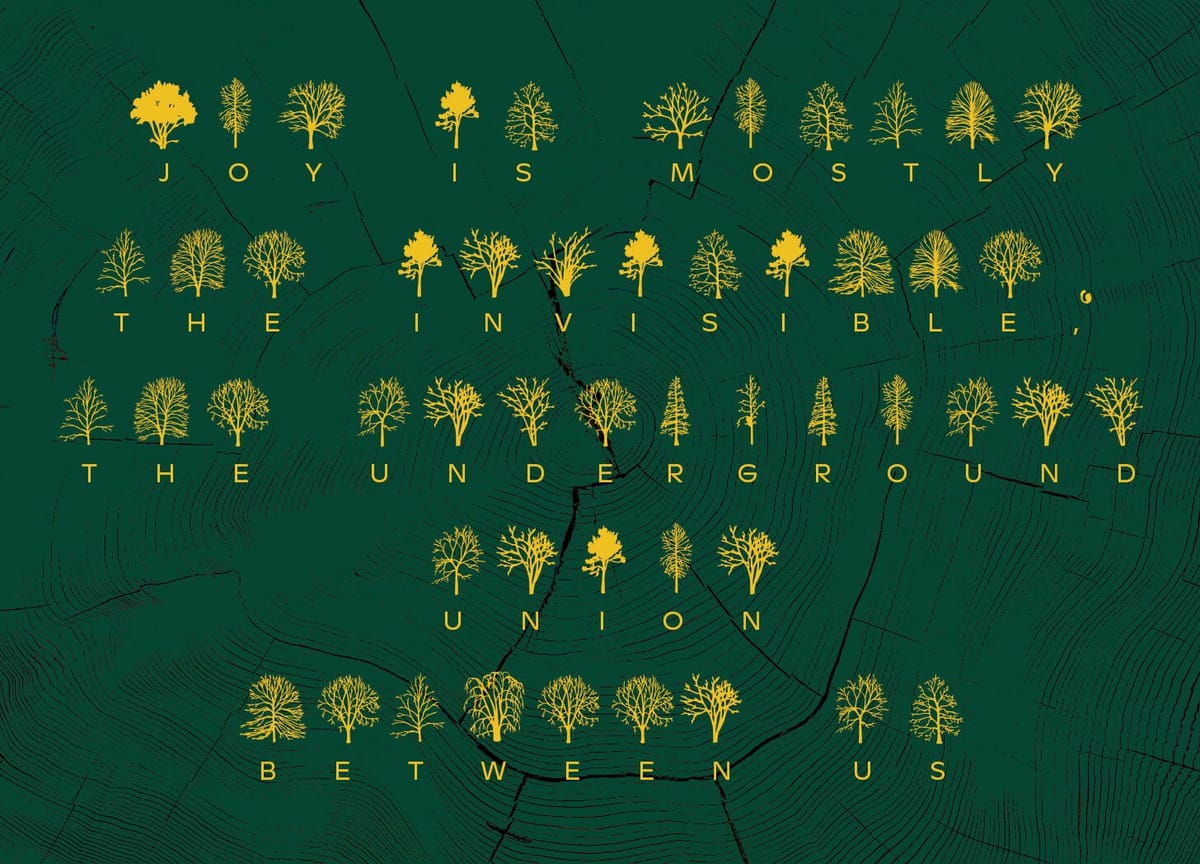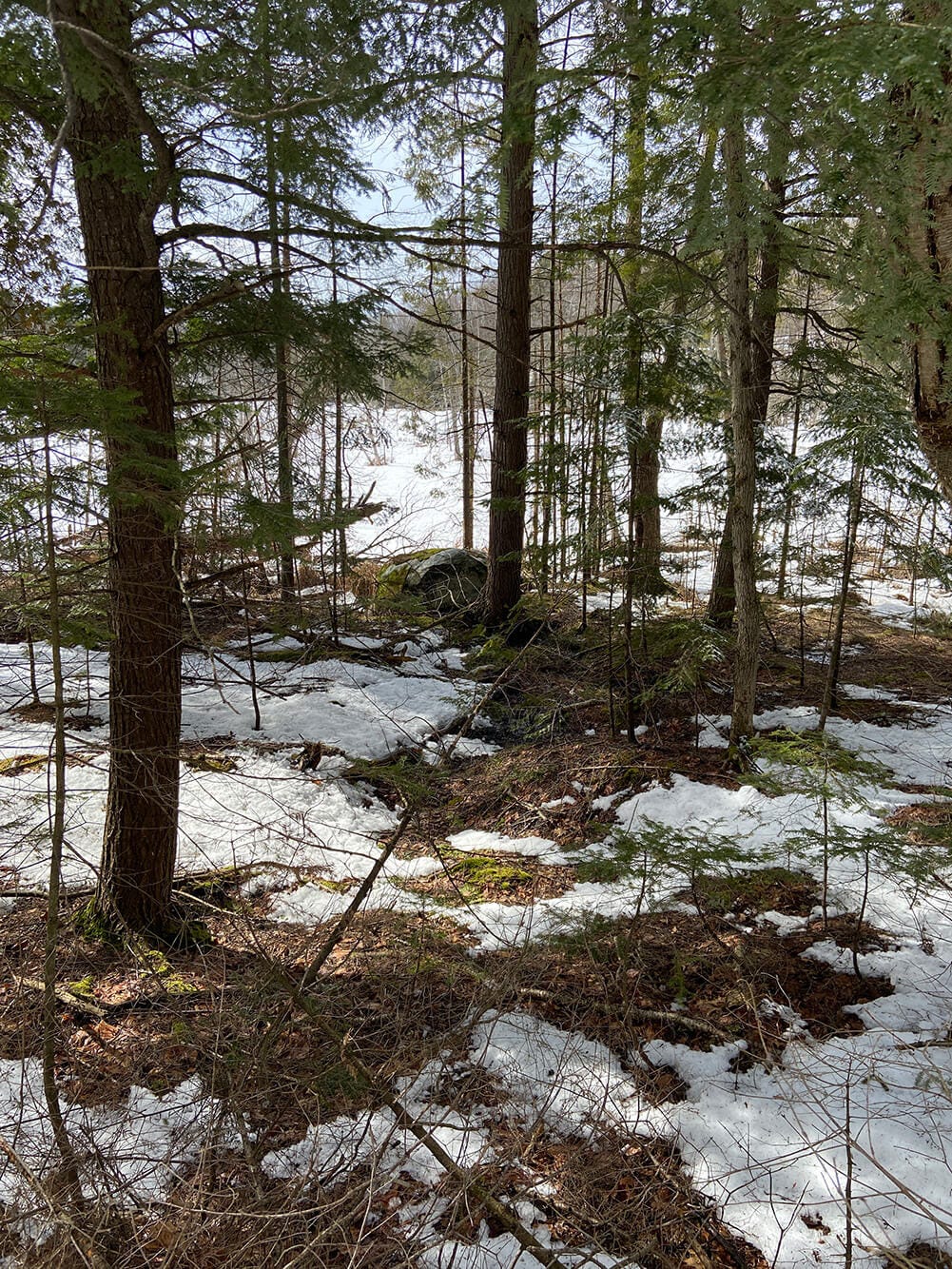Branch Library
A reminder that our roots are connected

Hi everyone,
“Letters of the alphabet are like seeds planted on a blank page,” artist Katie Holten writes in the afterword to The Language of Trees (buy at Bookshop or Indigo), her absorbing compendium of writing on the subject. Such thematic compilations are one of my favorite kinds of books: bringing together figures from many eras and disciplines, giving each a few lines or a few pages, they offer knowledge and inspiration alike.
This one ranges especially widely, featuring Plato and contemporary artist Andrea Bowers, nineteenth-century abolitionist Sojourner Truth and Indigenous leader Nemo Andy Guiquita, Extinct Symbol’s Twitter feed and experimental Danish poet Inger Christensen. Holten has arranged their words into loose groupings, from “Seeds, Soil, Saplings” to “Forests” to “Roots & Resistance.” As that last word suggests, the book is not only “a celebration of trees and our entangled relationship with them,” but “also a call to action.”
Holten has also performed an additional action on all these stories, poems, tweets, dialogues, memoirs, and tracts: a little forest of tree silhouettes accompanies each excerpt. She has “drawn” each text using Trees, a typeface that translates each character you type into the outline of a particular species. (You can download it here.) These two kinds of marks—letters and trees—give the book two rhythms and underscore the sense of creativity with which I believe she wants us to approach this material.
So, about that knowledge and inspiration. From this book I learned elemental things, things I might have known had I not been raised three blocks from a subway station, like how tree rings form. I also learned more surprising facts, like how a single rule governs the branching patterns of nearly all trees, and that Leonardo da Vinci was the first to observe the pattern, more than five hundred years ago. I won’t say what that rule is. Look it up; the inspiration seems as important as the knowledge.
The best compilations, like this one, spin you out into associative reveries. While reading I was reminded that I carry within me my own forest. Among other things, it’s composed of the late Rodney Graham’s upside-down tree portraits; Eirik Johnson’s close-up views of graffiti scratched into bark; John McPhee’s slim treatise on oranges; Zoe Leonard’s reconstructed specimen, exhibited at Paula Cooper Gallery in 1997 and which I have only ever seen in documentation photos. The fact that the majority of what came to mind is drawn from art and literature inspires me in another way: to go outside and become better acquainted with trees around me, to plant new seedlings in my memory.

One fact I did know prior to reading The Language of Trees is that what we sometimes perceive as a stand of trees, or even an entire forest, is in fact one organism united by a massive underground root system. The most thrilling reading I’ve done lately reveals to me how this interconnection is true of much else besides. One of my favorite books in recent years is Ross Gay’s The Book of Delights, whose small observational essays provoke the titular feeling. By coincidence—or perhaps not—Gay introduces this volume. But it is the excerpt from his earlier book, included here near the end, that resonates most strongly:
“Because in trying to articulate what, perhaps, joy is, it has occurred to me that among other things—the trees and the mushrooms have shown me this—joy is mostly the invisible, the underground union between us, you and me, which is, among other things, the great fact of our life and the lives of everyone and everything we love going away. If we sink a spoon into that fact, into the duff between us, we will find it teeming. It will look like all the books ever written. It will look like all the nerves in a body.”
Love all ways,
Brian
Good links
- 📜 Lapham’s Quarterly is a delightful and thought-provoking magazine that is structured like The Language of Trees, with ideas drawn from across time and space.
- 🚗 Maps that show what percentage of downtown is given over to parking lots (via Devon Zuegel, who also argues “we should be building cities for people, not cars”).
- 🏢 Beautiful, detailed drone photographs of early-twentieth-century American highrises (via Jason Kottke)
- 📽️ Last month a feature-length documentary about artist and designer Geoff McFetridge premiered at SXSW. Here’s the trailer.
- 📔 On Bice Curiger and Parkett magazine: “It was more than printed matter; it was an exhibition in paperback form that celebrated the printed volume as kunsthalle, museum, collection and gallery.”
- 🔳 On children’s maps, Susan Kare’s icons, and more: “I think we project grids outwards onto the world from within ourselves, shining their structure from our minds. We radiate grids.”





